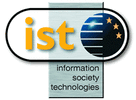
This overview was written for the original project proposal, September 2001
For the Web to reach its full potential, it must evolve into a Semantic Web, providing a universally accessible platform that allows data to be shared and processed by automated tools as well as by people. The 'Semantic Web' is a recent initiative of the World Wide Web Consortium (W3C), with the goal of extending the current Web to facilitate Web automation, universally accessible content, and the 'Web of Trust'.
The SWAD-Europe project aims to support W3C's Semantic Web initiative in Europe, providing targeted research, demonstrations and outreach to ensure Semantic Web technologies move into the mainstream of networked computing. The project aims to support the development and deployment of W3C Semantic Web specifications through implementation, research and testing activities. Semantic Web Advanced Development for Europe (SWAD-Europe) aims to play a key role in the evolution of the Semantic Web, through education and outreach to developers, organisations and content creators; through Open Source implementation and testing, and through pre-consensus technology development to drive and inform the creation of new Semantic Web standards.
The period 2002-2004 will see the first wave of mainstream Semantic Web applications. SWAD-Europe's role will be to ensure that the critical technology components required for widespread Semantic Web adoption are readily accessible to European industry, consumers, and developers. This involves finding and maintaining a balance between "in-house" Open Source tool development, community building, outreach and evangelism, combined with more technologically advanced research and analysis to support and field-test Semantic Web standards.
Following a 30 month schedule, by completion the project will have:
The objectives of the project can best be understood in terms of the kinds of user scenarios that will inform the project throughout its lifecycle. As longstanding participants in the Semantic Web, XML and Web developer communities, the project team are familiar with a number of 'frequently asked questions' that arise when considering Semantic Web technology. These come from technical, consumer, content creator and business perspectives, but a common theme recurs: technology integration.
Which standard should I use?"
"How do use RDF with XML Schemas? "
"...or Web Services with Web Ontologies? ...MathML with RDF-rules?"
Such questions are often themselves a means to an end. The goal is typically not to integrate two different W3C data formats, but to complete some more specific task. Technology-oriented questions often mask an application-oriented need.
We often hear questions such as:
"I am re-engineering our Intranet and want a standards-based way of exchanging (amongst other things) 'organisational chart' information about departments and groups. The XML Schema Specification seems relevant, since we keep much of this data in relational databases, and tools exist to export data using XML Schema. Everybody recommends the use of XML, but there seem to be so many different ways of using it. The XML specification provides DTDs; there is also now an XML Namespaces specification, and a number of alternative XML Schema languages."
"Added to this, articles I read about the Semantic Web suggest I should be using an `Ontology language' (instead?), based on RDF Schema and(/or) DAML+OIL. Since the information we are trying to represent is an organisational chart, we are also considering the use of Scalable Vector Graphics (SVG) to create, exchange and edit this information. It is not clear which, if any, of these technologies are most appropriate to use, nor what the relationship between them is."
While exaggerated here for effect, these concerns are real, current and addressable. To answer this, we need a combination of advanced technology development and a programme of documentation, demonstration, education and outreach.
From the concerns of managers and technologists, content creators and policy makers, we note this same need. Web technology, and now Semantic Web technology in particular, presents a daunting array of tools, specifications and techniques. The full range of relevant technology, while in principle extremely powerful, also risks stifling or delaying innovation through providing too much to choose from.
The overarching aim of the project is thus to provide, through all appropriate means, a body of answers to questions that have to date gone unanswered, and to foster grassroots communities within which such concerns are addressed. This approach informs the project management and overall direction of SWAD-Europe, as well as the content of each workpackage. It is more important to offer clear answers to these questions than it is for us to write software or complex technical reports. Our technical research and advanced development activities are a means to an end: facilitating wide-scale Semantic Web deployment. The project will therefore remain responsive to external developments (such as the appearance of unanticipated third-party work, software libraries etc.), refining the technical focus of the research to track the current state of the art, and to respond to the concerns of stakeholder communities.
Dan Brickley
(W3C/ILRT),
project director
last updated: $Date: 2003/06/11 12:34:41 $